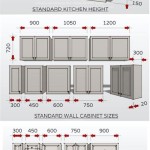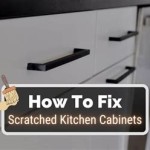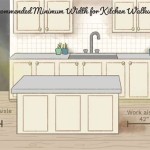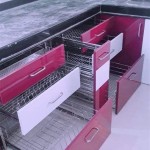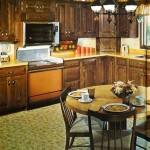Kitchen Cabinet Not Closing All the Way: Troubleshooting and Solutions
A kitchen cabinet that refuses to close completely is a common household annoyance that often signifies an underlying issue that, if left unaddressed, can lead to further complications. These issues may range from minor inconveniences like uneven cabinet doors to more significant problems impacting the structural integrity of the cabinetry. Understanding the potential causes behind this problem and implementing appropriate solutions can restore the functionality and aesthetic appeal of your kitchen.
The frustration stemming from a cabinet door that won’t fully close extends beyond aesthetics. It can expose stored items to dust, pests, and temperature fluctuations. A partially open cabinet door may also pose a safety hazard, particularly for children and individuals with limited mobility. Furthermore, the persistent struggle of forcing a cabinet door shut can eventually damage hinges, frames, and even the contents of the cabinet itself. Therefore, it is essential to inspect the cabinet and identify the root cause of the problem before attempting any repairs.
Understanding the Potential Causes
Several factors can contribute to a kitchen cabinet's inability to close properly. These factors can be broadly categorized into issues with the hinges, the cabinet frame, the door itself, and obstructions within the cabinet's interior. A comprehensive assessment of each of these areas is crucial for accurate diagnosis and effective remediation.
Hinge Problems: Hinges are the fundamental components that allow the cabinet door to swing open and closed. Over time, they can become loose, misaligned, or damaged, directly affecting the door's ability to close flush with the cabinet frame. Regular use, humidity fluctuations, and even the weight of the cabinet door can contribute to these problems. Loose screws securing the hinges to the cabinet frame or door are a frequent culprit. Similarly, worn-out hinge mechanisms can prevent the door from aligning correctly. In some cases, the hinges themselves might be bent or broken, requiring replacement.
Cabinet Frame Issues: The cabinet frame provides the structural support for the entire cabinet assembly. Any warping, twisting, or settling of the frame can distort the opening, making it difficult for the door to close properly. This distortion can occur due to moisture exposure, uneven flooring, or even the natural settling of the house over time. Frame issues may manifest as gaps between the cabinet frame and the wall, or an uneven surface where the cabinet door closes.
Door Warping or Damage: The cabinet door itself can be susceptible to warping or damage, particularly in environments with high humidity or extreme temperature fluctuations. Warping can cause the door to bend slightly, preventing it from aligning correctly with the cabinet frame. Dents, cracks, or swelling of the door material can also obstruct the closing mechanism. Particleboard doors are generally more prone to warping than solid wood doors.
Internal Obstructions: Sometimes, the reason a cabinet won't close is simply due to obstructions inside the cabinet. This could be items that have shifted, oversized objects that are placed too close to the door, or even loose objects that have fallen into the path of the door's closing mechanism. Checking for any such obstructions is always the first step in troubleshooting a cabinet that won't close properly.
Troubleshooting Common Problems and Their Solutions
Once you understand the potential causes, you can begin troubleshooting the issue. Start with the simplest possibilities before moving on to more complex solutions. A systematic approach will help you identify the problem and implement the appropriate repairs efficiently.
Addressing Loose Hinges: The first step is to examine the screws that secure the hinges to the cabinet frame and door. Use a screwdriver to tighten any loose screws. If the screws are stripped and no longer hold, try replacing them with longer or thicker screws. Alternatively, you can use wood glue and toothpicks or small wooden dowels to fill the stripped screw holes before re-inserting the screws. Allowing the glue to dry thoroughly before tightening the screws will provide a more secure hold. If multiple screws are stripped, consider replacing the entire hinge.
Correcting Hinge Misalignment: If the hinges are not aligned properly, the cabinet door may rub against the frame or not close flush. Loosen the screws on the hinges slightly and adjust the door's position until it aligns correctly with the frame. Once you are satisfied with the alignment, tighten the screws securely. You may need to experiment with the adjustment slightly to find the optimal position. In some cases, shims placed behind the hinge can help to correct minor misalignment issues.
Dealing with Warped Doors: Minor warping can sometimes be corrected by applying gentle pressure to the door in the opposite direction of the warp. You can use clamps and shims to hold the door in place for several days, allowing it to gradually return to its original shape. However, for more significant warping, you may need to replace the entire cabinet door. Consider investing in solid wood doors to prevent future warping issues.
Addressing Cabinet Frame Issues: If the cabinet frame is warped or twisted, the repair process can be more complex. For minor warping, you may be able to use shims to level the cabinet and correct the alignment. However, for more severe frame damage, you may need to consult with a professional carpenter. They can assess the extent of the damage and recommend the most appropriate repair solution, which may involve reinforcing the frame or even replacing the entire cabinet.
Removing Internal Obstructions: Before attempting any other repairs, thoroughly inspect the inside of the cabinet. Remove any items that may be blocking the door's path. Rearrange the contents of the cabinet to ensure that nothing is pressing against the door when it is closed. Simple reorganization can often resolve the problem quickly and easily.
Advanced Solutions and Professional Assistance
Certain situations may require more specialized knowledge and tools to resolve. In such cases, seeking professional assistance from a qualified carpenter or cabinetmaker is recommended.
Replacing Hinges: If the hinges are severely damaged or worn out, replacing them is often the most effective solution. When selecting replacement hinges, ensure they are compatible with the type of cabinet and door. There are numerous types of hinges available, including concealed hinges, surface-mounted hinges, and self-closing hinges. Choose hinges that match the existing style and functionality. When replacing hinges, take careful measurements to ensure the new hinges are installed in the correct position. Using a hinge jig can help to ensure accurate placement.
Re-Sizing Cabinet Doors: In situations where the cabinet door has swollen due to moisture exposure, it may be necessary to re-size the door. This involves carefully trimming the edges of the door to reduce its overall dimensions. Use a hand plane or a power planer to remove small amounts of material from the edges of the door until it fits properly within the cabinet frame. Be careful not to remove too much material, as this can create gaps around the door. After re-sizing the door, you may need to re-finish the edges to match the rest of the cabinet.
Reinforcing Cabinet Frames: If the cabinet frame is weak or damaged, reinforcing it can improve its structural integrity and prevent further warping. This can be done by adding additional support braces to the frame, using wood glue and screws to strengthen existing joints, or even replacing damaged sections of the frame entirely. When reinforcing the frame, ensure that the new supports are properly aligned and securely attached. Consider using metal brackets or angle irons to provide additional strength.
Professional Consultation: For complex issues such as severe frame warping, structural damage, or extensive hinge problems, consulting with a professional carpenter or cabinetmaker is highly recommended. They have the expertise and tools to diagnose the problem accurately and implement the most effective repair solution. A professional can also provide advice on preventing future problems and maintaining the longevity of your kitchen cabinets. While professional assistance may involve additional costs, it can often save time and money in the long run by ensuring the repairs are done correctly.
Maintaining kitchen cabinets regularly can prevent many of the issues that lead to doors not closing properly. This maintenance includes regularly tightening hinge screws, wiping down cabinets to prevent moisture buildup, and avoiding overloading shelves. Proactive care will help ensure your kitchen cabinets remain functional and aesthetically pleasing for years to come.

Repair How Would You Fix This Cabinet Not Opening All The Way Home Improvement Stack Exchange

How To Adjust Kitchen Cabinet Doors That Won T Close

How To Adjust Kitchen Cabinet Doors That Won T Close

Repair How Would You Fix This Cabinet Not Opening All The Way Home Improvement Stack Exchange

3 Simple Ways To Adjust Kitchen Cabinet Doors Wikihow

Do It Yourself How To Adjust Cabinet Door Hinges Step By

How To Adjust Kitchen Cabinet Doors

How To Adjust Kitchen Cabinet Doors That Won T Close

3 Simple Ways To Adjust Kitchen Cabinet Doors Wikihow

How To Adjust 3 Hinges Align Cabinet Doors


